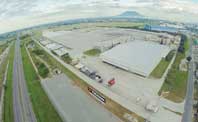The Philippine rubber industry aims to produce world-class, competitive products by adopting technology, sustainability practices, and standards, and by connecting with local and global markets, with the Philippine Rubber Industries Association Inc. (PRIA) at the helm, says Angelica Buan in this interview with Ellen Tan Go, President of PRIA.
PRIA: a unified voice for domestic rubber industry leaders
The Philippine rubber industry aims to become a key contributor to the country’s economic development by upgrading manufacturing skills, adopting technical and market standards, and strengthening connections with local and export markets.
 Driven by economic growth and increasing demand for rubber products, the industry leverages its expertise in producing a wide array of products, technical capability, adaptability, and experienced labor to meet customer needs and fuel development.
Driven by economic growth and increasing demand for rubber products, the industry leverages its expertise in producing a wide array of products, technical capability, adaptability, and experienced labor to meet customer needs and fuel development.
The Philippine Rubber Industries Association Inc (PRIA), the main industry organisation, plays a crucial role in driving the sector’s growth and development. Established in 1979 from the merger of the Philippine Rubber Manufacturers Association (PHIRMA) and the Rubber Industries Association of the Philippines (RIAP), PRIA has brought together key figures in the rubber industry.
Today, PRIA has 46 member firms, including 26 direct industry players and several business development service providers, such as material suppliers and logistics companies.
 In an exclusive interview with Ellen Tan Go, President of PRIA, Rubber Journal Asia (RJA) explored the development goals, challenges, and successes of the Philippine rubber sector ahead of the upcoming 2024 Rubber Summit Conference, scheduled for 26-28 September in Davao.
In an exclusive interview with Ellen Tan Go, President of PRIA, Rubber Journal Asia (RJA) explored the development goals, challenges, and successes of the Philippine rubber sector ahead of the upcoming 2024 Rubber Summit Conference, scheduled for 26-28 September in Davao.
RJA: Please provide an overview of PRIA and its main objectives.
Ellen Tan Go: PRIA has served as the unified voice of the country’s rubber industry. Its membership comprises companies from various sectors, including manufacturing, trading, planting, and rubber processing. PRIA’s mission is to a cost competitive quality driven, supply-reliable, product diversified value chain from farming to rubber products manufacturing under sustainable practices.
RJA: Are there any upcoming or future plans within the organization/industry that you would like to share with us?
Ellen Tan Go: PRIA will continue to be a leading organisation in the rubber industry with the goal to support the Philippines industry towards a brighter and sustainable future. As PRIA we will continue to improve the services we provide to our members as well as to increase and consolidate our membership base. This is the time to show leadership, vision and commitment. To secure growth and competitiveness, we need to convert ambitious ideas into measurable outcomes with lasting impact and to do so we need the support and contribution of every one that has at heart the future of the Philippines rubber economy.
Grace under pressure; coping with challenges
The Philippines rubber industry, like many others both locally and globally, has faced numerous challenges in recent years due to market volatility and economic disruptions. These factors have impacted demand, production, and overall competitiveness.
According to a policy brief from the Department of Science and Technology – Philippine Council for Industry, Energy, and Emerging Technology Research and Development (DOST-PCIEERD), the industry must address several key issues: fluctuating supply and volatile prices, which have lowered the priority of testing services for producers and processors; a need for greater support for grassroots technology; and improvements in regulatory standards, access to rubber testing laboratories, and related areas.
Additionally, severe weather conditions, such as unseasonal rains and typhoons, have reduced production per hectare. These weather-related challenges disrupt supply chains and production schedules, exacerbating existing issues.
RJA enquired about the current situation on the ground.
RJA: What is the current situation of the country’s rubber industry and challenges? If there are any, how are these being addressed?
Ellen Tan Go: We live in a dynamic and ever-changing world. The development of new technologies, the need to mitigate and adapt to climate change risks, and the overarching goal of achieving a more sustainable society present both challenges and opportunities for the rubber industry
Our priority should be to ensure growth and stability for our companies while also improving the quality of life for the millions of families working in both the upstream and downstream sectors of the rubber economy.
We need a human-centred approach that fosters people’s capabilities through new technologies, manages intergenerational social trends, and builds long-term competitive advantages by rethinking our business models.
These topics will be the focus of discussions at the three-day event organised by PRIA and Xida Communications, “Rubber: New Frontiers, New Markets,” which will be held in Davao city, Philippines.
RJA: Is government support for the industry adequate or lacking?
Ellen Tan Go: As I mentioned earlier, when we think about our industry, we need to adopt a human-centric approach. Providing better living conditions for workers, especially smallholders, must be a priority.
Close collaboration between the industry and national and local governments is key to achieving what we call “sustainability.” We need to define a rubber “sustainability” roadmap that addresses social, economic, and environmental aspects. Sustainable practices have the potential to reduce the carbon footprint of rubber production and use, making it more attractive to consumers and opening new markets and opportunities.
Growth and expansion prospects
The Philippines rubber industry is clearly experiencing rapid growth and expansion, driven by advancements in manufacturing and increasing demand for high-quality products. RJA inquired further about recent developments in the local rubber industry under PRIA’s oversight.
 RJA: Can you provide an update on the latest expansion developments in the local rubber industry?
RJA: Can you provide an update on the latest expansion developments in the local rubber industry?
Ellen Tan Go: Head Sport, an Austrian-American sports equipment and apparel manufacturer that dominates the global tennis ball market, has opened a new plant facility in the Philippines.
This will be the largest tennis ball production facility in the world. Head Sport Philippines Inc. is located in the Anflo Industrial Estate in Davao del Norte. In addition to this development, we can see that several local motorcycle tyre manufacturers are also expanding their factories.
RJA: Which are the major markets for Philippine rubber, and what applications are in demand? Ellen Tan Go: Today, the downstream sector of the rubber industry in the Philippines is a dynamic and integral part of the overall value chain.
 In the Philippines, as elsewhere, the major enduse market remains tyre manufacturing, though the market also includes producers of automotive parts, sports products, and footwear.
In the Philippines, as elsewhere, the major enduse market remains tyre manufacturing, though the market also includes producers of automotive parts, sports products, and footwear.
RJA: Do local tyre manufacturers/OEMs such as Dunlop, Yokohama, Westlake, Cooper, Aeolus, CST, Michelin, Agila, Leo, and Izumi, which have plants in the Philippines, utilise local rubber? Has their consumption of local rubber increased in the last five years?
Ellen Tan Go: Companies such as Yokohama are investing in new capabilities that will require increased domestic NR production. This is also true for other domestic tyre makers, as their local rubber consumption has significantly increased over the past five years.
 The Filipino rubber manufacturing sector needs to attract investments to improve quality and ensure sustainable production. In this regard, a publicprivate partnership is key to moving from “strategy to action” and ensuring that the Philippines can harness its rubber production capabilities to boost economic development.
The Filipino rubber manufacturing sector needs to attract investments to improve quality and ensure sustainable production. In this regard, a publicprivate partnership is key to moving from “strategy to action” and ensuring that the Philippines can harness its rubber production capabilities to boost economic development.
Cooperation to drive sector’s global edge
Advancing technology and strengthening market connections are undoubtedly the secret sauce for boosting the industry’s global competitiveness and contributing to the Philippines’ economic development.
RJA: Are there any cooperations in the pipeline with other countries or markets that are targeted to drive growth?
 Ellen Tan Go: The challenges we face are global, and the Philippine rubber industry needs to cooperate with other countries and organisations to identify priorities and provide solutions.
Ellen Tan Go: The challenges we face are global, and the Philippine rubber industry needs to cooperate with other countries and organisations to identify priorities and provide solutions.
In this regard, PRIA collaborates locally with the Philippine Rubber Research Institute (PRRI) and the Department of Trade and Industry (DTI) to promote activities that strengthen the Philippines’ rubber supply chain.
This collaboration recognises the importance of smallholders and smallholders’ cooperatives, which are the backbone of the rubber economy in our country.
RJA: How can the local rubber industry be driven further for growth?
Ellen Tan Go: To enable further growth in the local rubber industry, we believe it is essential to enhance cooperation at an internal level, particularly among associations of rubber-producing and consuming countries.
We need to establish a platform that facilitates the exchange of experiences and best practices while improving mutual understanding of each other’s needs.
In the coming months, PRIA will lead efforts to promote such collaboration.
